It takes more than a meal to solve hunger.
Food insecurity issues are often part of larger challenges. That’s why, to kick off our 40th year, we are also kicking off a new strategic direction with a dual focus on addressing hunger today while creating longer-term food security tomorrow.
To address the root causes of hunger and inequity in our region, we need new and innovative approaches. Food can be a powerful catalyst for change and for more inclusive economic growth that begins to address our region’s inequities. Our next stage of work will seek to harness that power.
In Our 40th Year, Here’s 5 Ways We’re Moving the Needle Towards Brighter Futures:
Customizing and tailoring food to client age and culture.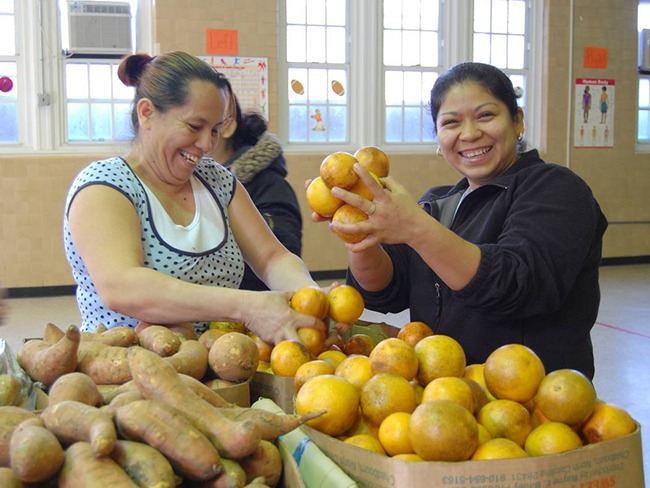
Different people need and prefer different kinds of food based on age, culture, and dietary needs. That’s why we’re focusing on ways to better address client needs, from offering more prepared food options for seniors who may have limited ability to cook to offering more culturally appropriate options for different kinds of families. By taking these things into consideration, in the form of both ingredients for cooking and prepared meals, we’ll be able to support more customized dietary needs, reduce risks of poor health outcomes, and measure the the impact of better quality food on people’s lives.
Broadening access to food for clients in every community.
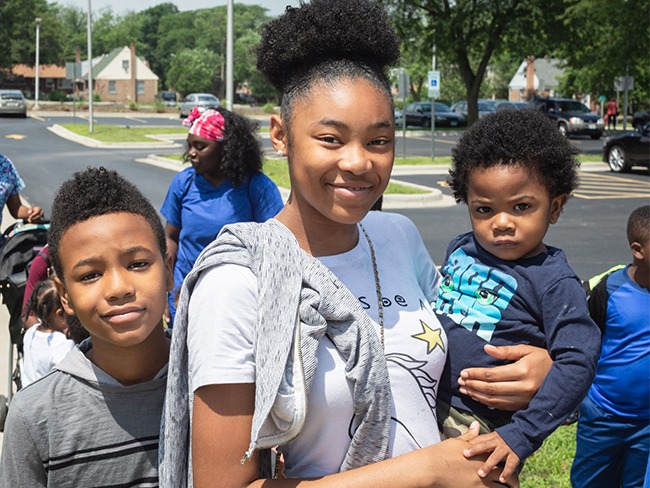 Having access to healthy food throughout your life makes all the difference. The food bank’s reach across the community is wide – but there are many parts of our region where both a lack of full-service grocery stores and brick and mortar nonprofit partners make physically getting to food a challenge. That’s why we’ll be getting creative with how we make food available to communities in need, using new kinds of delivery, and harnessing existing technology and trends to create more options for our clients.
Having access to healthy food throughout your life makes all the difference. The food bank’s reach across the community is wide – but there are many parts of our region where both a lack of full-service grocery stores and brick and mortar nonprofit partners make physically getting to food a challenge. That’s why we’ll be getting creative with how we make food available to communities in need, using new kinds of delivery, and harnessing existing technology and trends to create more options for our clients.
We’re also exploring additional methods for reaching those who need access to food, and ways to provide affordable food (vs. free alone) as an option for the communities we serve. Whether it’s bringing good food to people who need it, or bringing people to good food, these new options will make securing food easier – and will also make it easier to eat better in less time.
Pairing food with services that address the root causes of hunger.
We know that people in need of food are also in need of a variety of 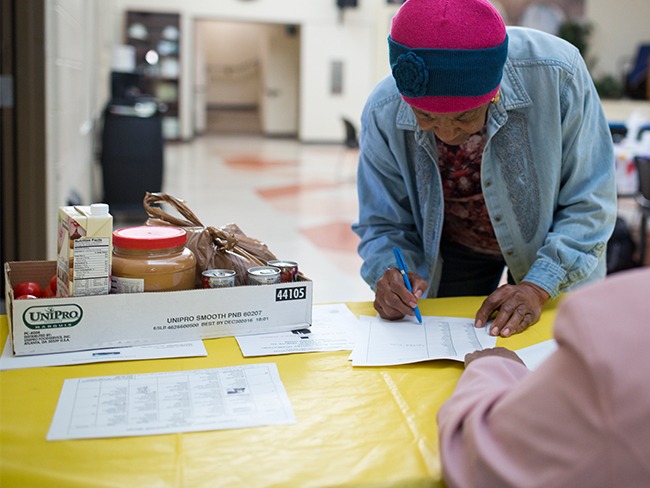 other resources to overcome the obstacles poverty presents. Doing this work requires more than food, and we can’t do it alone. That’s why we’re forming new partnerships with organizations — both nonprofits and for-profits — that may not distribute food as a primary part of their work, but that are addressing the root causes of food insecurity. Bundling food with programs that enable people to get and hold jobs, stay healthier, or otherwise build more empowered, brighter futures will be making it easier for those who come to those organizations for other services to get healthy food and the services they need in one place. This saves people time, and helps to keep them coming back — increasing the odds they’ll complete a training or attend a follow up visit for medical services.
other resources to overcome the obstacles poverty presents. Doing this work requires more than food, and we can’t do it alone. That’s why we’re forming new partnerships with organizations — both nonprofits and for-profits — that may not distribute food as a primary part of their work, but that are addressing the root causes of food insecurity. Bundling food with programs that enable people to get and hold jobs, stay healthier, or otherwise build more empowered, brighter futures will be making it easier for those who come to those organizations for other services to get healthy food and the services they need in one place. This saves people time, and helps to keep them coming back — increasing the odds they’ll complete a training or attend a follow up visit for medical services.
Streamlining to enhance efficiency and reduce food waste, from source to table.
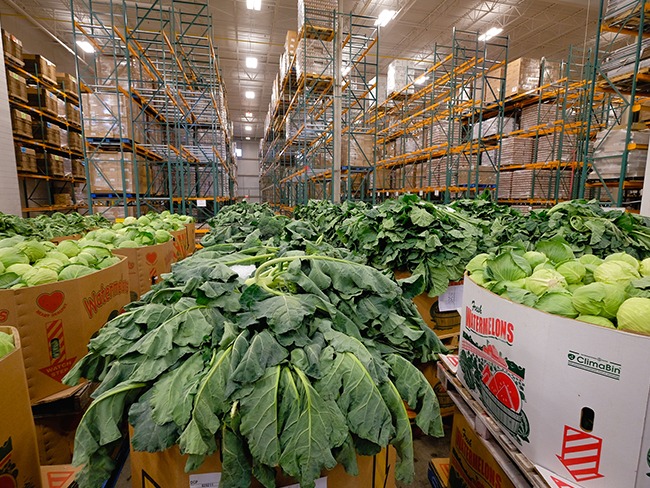 As technology continues to evolve, so do the opportunities to improve the speed with which we source and deliver food, find new ways to reduce food waste in our supply chain, and stretch our resources to continuously improve services for our clients. With the availability of new tools and systems, the food bank can and will continue to evolve in ways that will save valuable time and resources, and help more good food make its way to a family’s plate rather than going into the trash. This effort will encompass all food bank activities — especially logistics, transport, technology, and systems — to enhance the efficiency of our supply chain, ensure we’re getting food to the people who need it most, and reduce time from source to table.
As technology continues to evolve, so do the opportunities to improve the speed with which we source and deliver food, find new ways to reduce food waste in our supply chain, and stretch our resources to continuously improve services for our clients. With the availability of new tools and systems, the food bank can and will continue to evolve in ways that will save valuable time and resources, and help more good food make its way to a family’s plate rather than going into the trash. This effort will encompass all food bank activities — especially logistics, transport, technology, and systems — to enhance the efficiency of our supply chain, ensure we’re getting food to the people who need it most, and reduce time from source to table.
Elevating hunger awareness, the role we can all play in reducing it, and ways to contribute to the solution.
Spreading and growing awareness of the hunger exists in 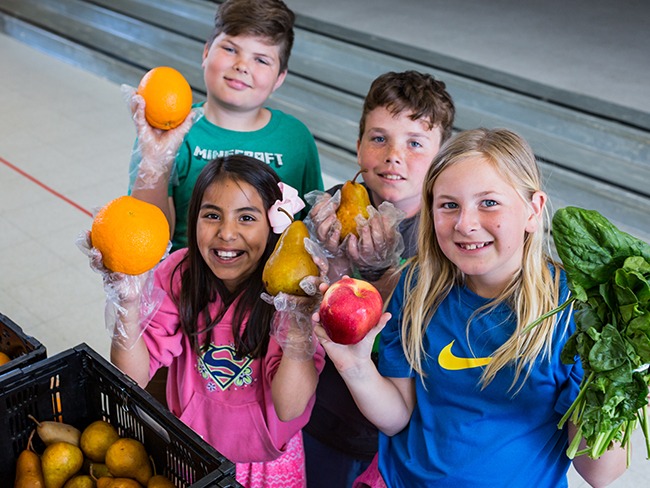 our region — and the breadth and diversity of those it impacts — is the first step towards creating solutions. With an even greater emphasis on our clients and their needs, we will provide new and creative ways for the community to volunteer and engage with our work directly in the community. And through the collection and use of data from our pilot programs, we will gather a body of research to engage elected officials and other policymakers and advocate for policies and programs that enable the people we serve to create brighter futures. It will take the involvement of an ever-widening swath of our community —from donors and partners volunteers and advocates— to generate the resources and momentum that will enable us to continue to do more for those who need support.
our region — and the breadth and diversity of those it impacts — is the first step towards creating solutions. With an even greater emphasis on our clients and their needs, we will provide new and creative ways for the community to volunteer and engage with our work directly in the community. And through the collection and use of data from our pilot programs, we will gather a body of research to engage elected officials and other policymakers and advocate for policies and programs that enable the people we serve to create brighter futures. It will take the involvement of an ever-widening swath of our community —from donors and partners volunteers and advocates— to generate the resources and momentum that will enable us to continue to do more for those who need support.

